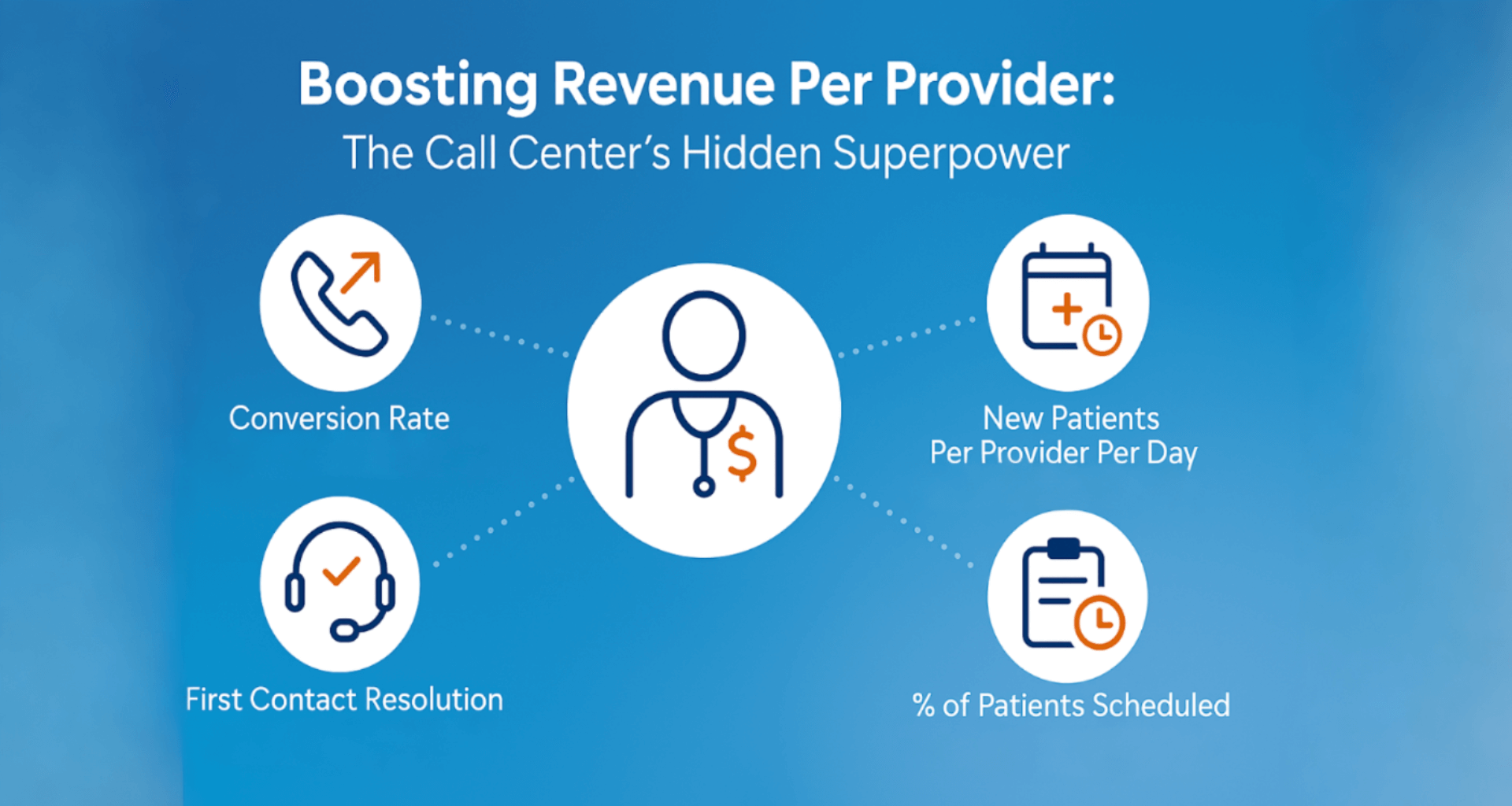
Imagine this all-too-familiar scenario: You're a patient in need of urgent medical advice. You dial your healthcare provider's call center, which is powered by Oracle Health's clinical suite, hoping for a swift and reassuring response.
Instead, you find yourself trapped in a labyrinth of transferred calls. You repeat your symptoms to multiple agents who seem to have no access to your previous interactions or records.
Frustration mounts as you wonder, "Why can't they just have my information in one place?"
This is the daily reality for many patients who call into clinics that use Oracle Cerner. There's nothing wrong with Millenium or CommunityWorks, but call centers that rely solely on Cerner's clinical suite to handle all interactions and scheduling find it difficult to meet clinical and operational efficiency in patient access.
The problem: fragmentation fatigue
Fragmentation fatigue is the frustration and inefficiency caused by navigating multiple, disconnected systems. It means that healthcare call center agents and nurses:
- Juggle different apps and databases to access critical patient data.
- Manually update patient information across multiple platforms.
- Struggle to leverage PowerChart or CPM data intelligence effectively.
The consequences are decreased productivity, excessive errors, and an atmosphere of stagnation and disorder. A recent study by the Healthcare Information and Management Systems Society (HIMSS) found that 65% of healthcare providers cite fragmentation as a major barrier to providing the best possible service.
The consequences of fragmented systems within Oracle cloud infrastructure
The ripple effect of fragmentation extends far beyond the call center, setting off a domino effect of challenges that undermine the entire healthcare organization's ability to meet rising consumer expectations:
- Complex and inconsistent documentation practices: documentation procedures spread across disparate systems leads to confusion and heightens the risk of errors. Agents spend valuable time deciphering inconsistent formats instead of focusing on delivering a patient-focused healthcare experience.
- High effort required for managing multiple systems: Call center agents often find themselves juggling multiple platforms, from PowerChart, the telephone system, knowledge bases, messaging and fax systems, and each of these has its own unique interface and requirements. This constant switching between applications leads to cognitive overload, increased stress levels, and eventual burnout.
- Inefficiencies and errors from double or triple data entry: When access to critical patient data or information is scattered across multiple systems, agents are forced to repeatedly enter the same data, wasting precious time and increasing the likelihood of mistakes. This redundancy not only frustrates patients, clinical and nonclinical staff alike, but also compromises data integrity and security solutions.
- Fragmented service metrics and lack of comprehensive performance views: Without a unified view of performance metrics, healthcare leaders struggle to make informed, data-driven decisions to strengthen business operations. Fragmented data hinders the ability to identify areas for improvement, implement appropriate performance improvement plans, and optimize the Oracle Health Millennium platform.
Coordinated flow: a solution to fragmentation for healthcare call centers
By merging Oracle Health EHR with a call handling platform into a single, unified CRM system, contact centers can create a 'coordinated flow' for every incoming patient call. This allows agents and nurses to quickly resolve both clinical and non-clinical inquiries without digging through PowerChart during their interactions.
This streamlined system provides many service-boosting benefits:
- Real-time access to patient information: With a unified platform, call center agents and nurses have instant access to comprehensive appointment data, provider information, and electronic patient health records, including medical history, medications, and previous interactions. This eliminates the need for patients to repeat information and enables agents and nurses to provide personalized, informed support.
- Streamlined workflows: Coordinated flow simplifies complex workflows by automating routine tasks and providing staffers with intuitive tools. From scheduling appointments to triaging cases, every interaction follows a structured, efficient process. This reduces errors, minimizes manual effort, and allows agents to focus on delivering exceptional patient care.
- Centralized knowledge management: With a centralized knowledge base integrated into the CRM, agents have quick access to up-to-date information, protocols, and guidelines. This empowers them to provide accurate and consistent advice—reducing the reliance on manual updates and training—which means staffers can focus on care.
- Enhanced collaboration: Coordinated flow breaks down silos and promotes collaboration among healthcare teams. By providing a shared platform for communication and data exchange, it enables seamless coordination between call center agents, nurses, physicians, and other stakeholders. This collaborative approach ensures that patients receive timely and comprehensive care, and can support life sciences innovation.
A study conducted by the American Nurses Association revealed that telephone nurses working in environments with integrated systems and streamlined processes report 40% higher job satisfaction and 30% lower burnout rates compared to those working in fragmented health systems.
Further, organizations that have built a coordinated flow have seen an average increase of 20 points in their Net Promoter Scores, indicating a significant boost in patient loyalty and satisfaction.
False solutions to fragmentation
Some healthcare organizations may be tempted to seek quick fixes or band-aid solutions, but these exacerbate problems in the long-run:
Investing in multiple, non-integrated applications: Trying to solve fragmentation by investing in multiple, non-integrated applications is a costly and ineffective approach. It leads to a patchwork of systems that fail to deliver a seamless patient-focused healthcare experience.
Hiring additional staff: In an attempt to compensate for inefficiencies, some organizations resort to hiring more call center agents. However, this approach fails to address the root cause of the problem and leads to increased labor costs without improving productivity or patient satisfaction, which strains already tight budgets.
Relying solely on manual updates: Manually updating knowledge bases and training materials across multiple systems is a time-consuming and error-prone process. As healthcare protocols and guidelines evolve, relying solely on manual updates becomes unsustainable. Centralized knowledge management ensures that agents always have access to the most current and accurate information, empowering them to deliver breakthrough clinical research and support patient safety initiatives.
Ignoring the impact on patient experience: Some healthcare leaders may underestimate the impact call center operations have in shaping the patient experience. Call center interactions are often the first and most frequent touchpoints for patients. Neglecting the effects of fragmented systems on patient experience can lead to lower satisfaction scores, reduced loyalty, and lost revenue.
Outsourcing call center operations: Outsourced agents may lack the deep understanding of the healthcare organization's processes and culture, leading to inconsistent patient experiences and reduced patient satisfaction, which in turn compromises the organization's ability to influence health outcomes positively.
Integrating a healthcare CRM with Oracle Health
Building a coordinated flow requires careful planning and execution. Here's a roadmap for success:
- Assessment and planning: Begin by conducting a thorough assessment of your current call center operations. Identify pain points and areas for improvement. Engage stakeholders from across the organization to gain a holistic understanding of the challenges and opportunities. Based on this assessment, develop a comprehensive implementation plan that outlines the goals, timelines, and resources required. Leverage insights from Oracle's healthcare analytics solutions.
- Selecting the right CRM platform: Evaluate CRM platforms based on their healthcare-specific capabilities, integration potential with Oracle Health, and alignment with your organization's needs.
- Implementation and integration: Partner with experienced implementation consultants who have a deep understanding of healthcare call center workflows and Cerner. They can guide you through the process of configuring the CRM platform, integrating it with your existing systems, and optimizing workflows to achieve maximum efficiency and patient satisfaction—and how to use PowerChart and CPM data intelligence to drive value-based health capabilities.
- Training and change management: Create new training programs to ensure your call center agents and nurses are proficient in using the new system. Provide ongoing support and resources to help them adapt to the new workflows and processes. Foster a culture of continuous learning and encourage staff to share best practices and feedback.
- Monitoring and continuous improvement: a healthcare CRM can provide unified metrics you cannot find anywhere else. Key performance indicators (KPIs) like first contact resolution, call handling stats by call type, readmission rates through nurse triage and the call center, appointment conversion rates, revenue and volume forecasting data, and satisfaction rates - key data to ensure you are not flying blind. Use this data to identify areas for improvement and make data-driven decisions to optimize your call center operations continually. Combine with Oracle's healthcare analytics solutions to gain deeper insights.
Final thoughts
By delivering seamless, efficient, and patient-centric call center experiences, healthcare organizations can differentiate themselves in the market, attract new patients, and build long-lasting relationships based on trust and loyalty, positioning themselves as leaders in the industry and setting the standard for excellence in patient care. Integrating a healthcare CRM with Oracle Health's professional services creates a coordinated flow that slices through clinical complexity to advance population health initiatives.
Don't let fragmentation fatigue define your call center any longer. Build a coordinated flow by integrating a healthcare CRM with Oracle Cerner and revolutionize the way you serve your patients and support your staff.
To learn more about how you can best leverage Oracle's healthcare analytics solutions and the Oracle clinical suite, download our free Oracle Health whitepaper, All Service Is Care.
Posted By

Ryan Hunt: Discover his expertise in digital development at Keona Health and explore innovative healthcare solutions that enhance patient experiences.
Related Post
July 30, 2025
when patients call, they’re not just dialing a number—they’re reaching for help. and...
April 10, 2025
in healthcare, every interaction is a decision point—one that can impact outcomes,...



